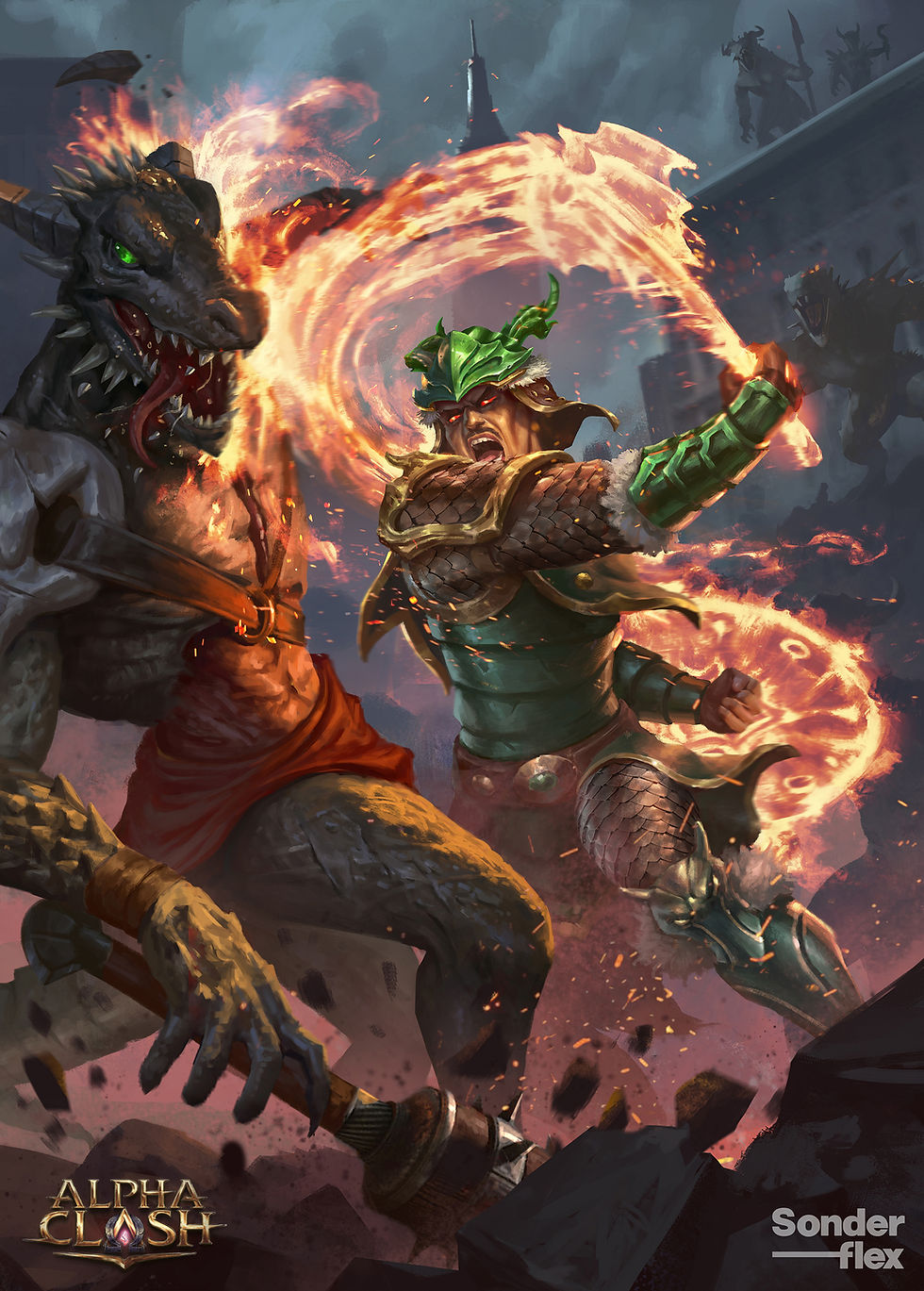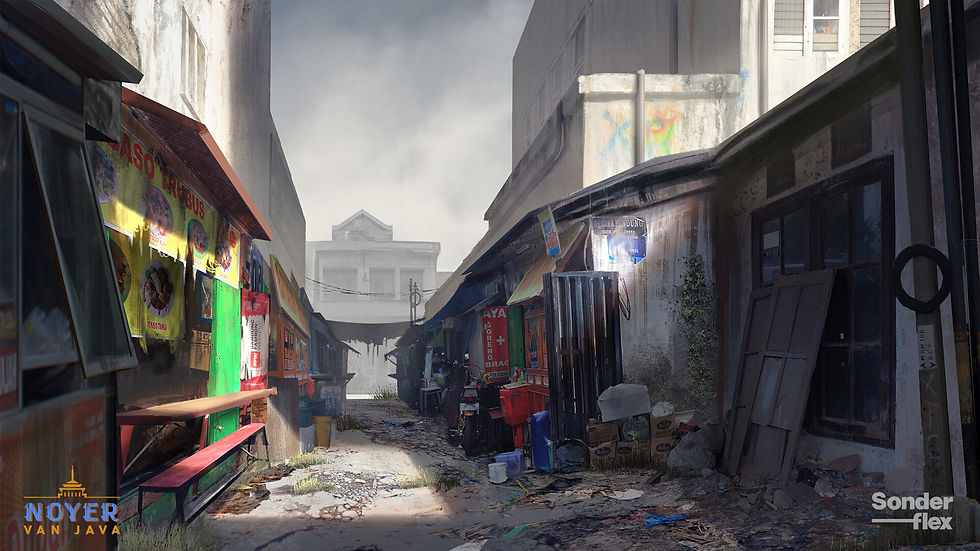Why the Art in Popular Board Games Isn’t Just Decoration
- Sonderflex Studio
- Jul 21
- 5 min read
Sonderflex Studio - In recent years, the board game industry has experienced a remarkable surge in creativity, design sophistication, and artistic ambition. Titles once dominated by simple tokens and flat design are now being replaced by beautifully illustrated worlds that rival the production value of video games and graphic novels. It’s no coincidence that the board games popular today all share a common strength: striking, immersive, and purposeful art.
Yet despite its visual appeal, art in board games serves functions that go far beyond surface-level aesthetics. When applied strategically, it becomes an integral part of the gameplay experience, enhancing usability, reinforcing narrative, building brand identity, and even influencing player behavior.
In this article, we explore why art in today’s most successful board games is not just decoration, but a critical design pillar that shapes how players connect with the game.

The Evolution of Board Game Art
From Utility to Immersion
Historically, board games prioritized functionality over style. Classic games like Monopoly, Risk, or Scrabble were largely utilitarian in their visual approach. Their designs focused on simplicity and practicality minimalism that allowed for broad accessibility but lacked emotional resonance.
This has shifted dramatically. Modern audiences expect more from their tabletop experiences. They seek immersion, mood, and thematic depth. Consequently, the visual landscape of board games popular today, such as Scythe, Gloomhaven, Wingspan, and Root is intentionally crafted to transport players into the heart of the game’s world.
How Art Influences the Success of Popular Board Games

1. Visual Storytelling and World-Building
In many successful modern board games, the art is responsible for telling the story before a single rule is read. Consider Gloomhaven, a sprawling tactical dungeon crawler. Its gritty, atmospheric illustrations set the tone for a dark, mercenary-driven narrative. Each character portrait and environment gives visual clues about the culture, history, and power dynamics within the game’s world.
Similarly, Root uses stylized, almost storybook-like illustrations to soften the feel of an otherwise cutthroat strategy game. The contrast between its charming animal characters and aggressive gameplay deepens the intrigue and sets it apart visually and thematically.
Art anchors players in a game’s setting. It helps them emotionally connect with the factions they play, the missions they accept, or the dilemmas they face. Without this visual narrative, the world may feel abstract and hollow.

2. Supporting Gameplay Clarity
While beauty is often the first thing noticed, functionality is where board game art often excels behind the scenes. Good art design in board games ensures that players can quickly interpret cards, boards, tokens, and game states.
Take Wingspan, for example. Its serene, nature-inspired illustrations do more than decorate. The illustrations help players instantly identify bird species and their traits. Each component is color-coded and framed in a way that prioritizes clarity.
Another excellent example is Spirit Island. Each spirit's unique iconography, color scheme, and illustration not only express their lore but help players distinguish powers, alignments, and roles during play. The strategic visual planning improves gameplay flow and reduces rulebook referencing.

3. Enhancing Emotional Engagement
People naturally form stronger emotional bonds with content that stimulates the senses. When the visuals of a board game are thoughtfully executed, they enhance the psychological and emotional experience of the players.
Art can invoke feelings of tension, triumph, fear, or tranquility. A horror-themed board game like Nemesis leans heavily into dark, biomechanical illustrations reminiscent of science fiction horror. The unease players feel is not only derived from game mechanics but also from the visual tone, claustrophobic corridors, ominous lighting, grotesque alien design. Without the right art, that tension would be difficult to maintain.
Conversely, games like Parks use breathtaking nature art to evoke relaxation and a sense of awe. This aesthetic tone supports the game’s meditative pacing and cooperative atmosphere.
The Role of Art in Branding and Market Appeal

1. Shelf Appeal and First Impressions
In the age of crowdfunding and online marketplaces, the visual identity of a board game often determines its success before it is even played. A compelling box illustration can make a game stand out on crowded retail shelves or among hundreds of Kickstarter listings.
Games like Everdell and Sleeping Gods owe much of their initial visibility to box covers that function like fine art pieces. These covers do not just promise gameplay, they invite the viewer into a world. They are branding tools that convey genre, tone, and quality at a glance.
It is no surprise that nearly every board games popular today has an instantly recognizable art style. That consistency and visual identity are essential for long-term brand building.
2. Fandom and Community Growth Through Visual Identity
When a game features strong and cohesive artwork, it becomes easier to foster a fanbase. Players are more likely to share images on social media, create fan art, or wear merchandise related to the game.
Root has spawned fan-made comics and character art. Frosthaven has captivated a growing community that eagerly analyzes visual clues from its environment and lore illustrations. This kind of community engagement directly results from the art’s emotional and narrative impact.
Functional Aesthetics: Art as Game Mechanic

Art also plays a role in how mechanics are interpreted and remembered. For instance, a unique monster design in a dungeon crawler not only identifies a threat but communicates its behavior. A tentacled creature with sharp mandibles signals close-range aggression; a floating specter might imply ranged or psychic attacks.
Some games, like The King’s Dilemma, use art to create tension in choice-driven mechanics. The illustrated envelopes and visual clues signal gravity, secrecy, or danger without needing to spell everything out in words.
When visual language supports mechanics this way, it enhances player comprehension and reduces cognitive load, making the game easier to learn and more engaging to play.
Art Direction and Team Collaboration

Creating the kind of art that elevates a board game requires more than talent. It demands planning, coordination, and alignment with the game’s goals. The most successful art in board games popular today is the result of close collaboration between game designers, art directors, illustrators, and graphic designers.
Key practices include:
Developing a style guide to maintain visual consistency across all components
Mapping player journeys to ensure art reinforces game flow and pacing
Iterative feedback loops between gameplay testing and visual design
Hiring specialists (e.g., character artists, UI designers, world illustrators) instead of generalists
Studios like Sonderflex, for example, specialize in building world-class art for board games through structured workflows and deep understanding of genre expectations.
Conclusion

The idea that board game art is merely decoration is outdated. In the modern industry, where aesthetics influence funding, player immersion, usability, and brand identity, art is a vital pillar of design. It has become a tool that shapes how we experience games, how we remember them, and how they thrive in a competitive market.
For game creators, investing in thoughtful, narrative-rich, and functional art is no longer optional, it is essential. The board games popular today succeeded not just because they play well, but because they look and feel unforgettable.
Give Your Game Remastering Project a Visual Quality Upgrade with Sonderflex Studio's Expertise

Sonderflex Studio offers specialist visual design skills that are not only captivating but also effective. Game Remastering requires expertise able to deliver the same feeling and message as when the game was first played, yet looking twice as appealing.
Sonderflex Studio's visual design also considers the creative process with in-depth research into which remastered game values can and cannot be changed. Drop Sonderflex Studio a hello, and let's discuss further!



